Ernest Hemingway is a fascinating character — even beyond his acclaimed writing, the man clearly lived an interesting life.
He covered multiple wars, hunted big game, became an expert angler, boxed, and reportedly even threw a grenade into a basement full of Nazis.
As a person, he’s been discussed and dissected over and over again and is one of the more studied people of the 20th century. This dissection reveals a very complex man from a complex time.
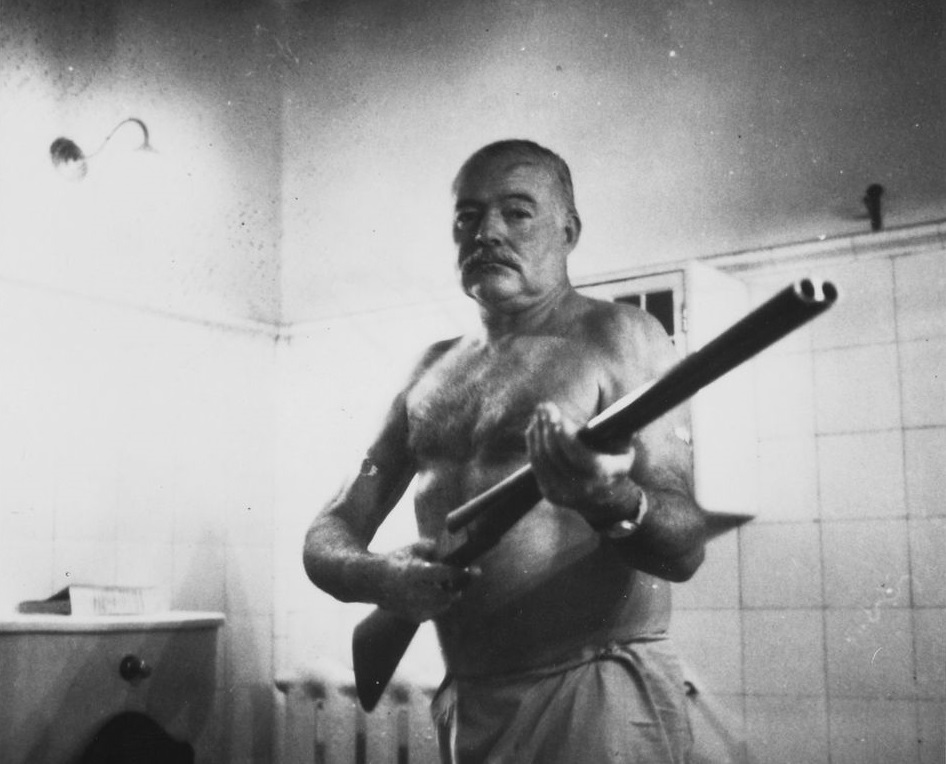
Among other things, Hemingway enjoyed hunting and shooting and owned a number of firearms over the years. He was less of a collector and more of a hard user and tended to seek out weapons that were practical rather than fanciful and collectible.
Today we are examining some of Hemingway’s weapons…
The Guns of Ernest Hemingway
Beretta SO3
When it comes to finely made over and under shotguns, Beretta is near the top. It’s no surprise to see one in the hands of Hemingway, a man who loved bird hunting.
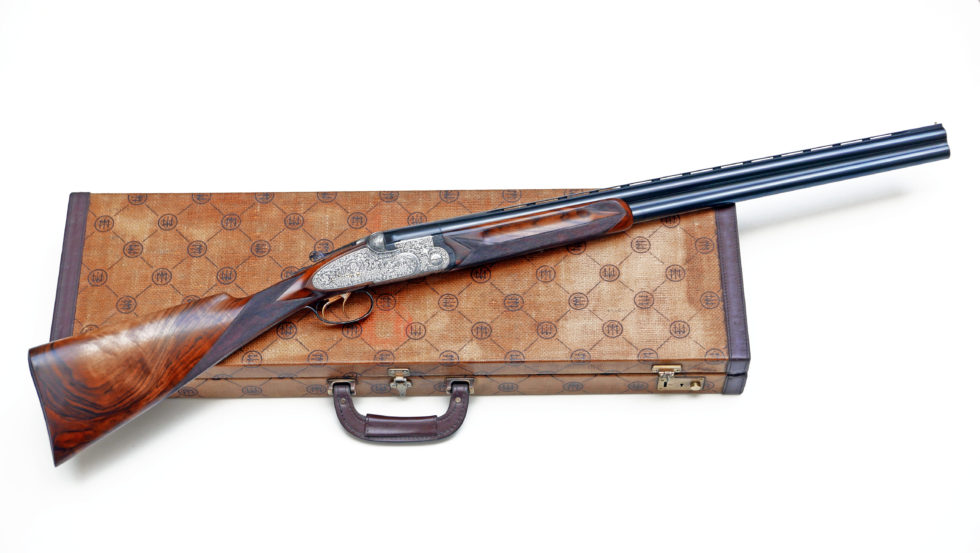
The Model SO3 used Beretta’s Executive Monoblock design, a rugged single-piece receiver made from one block of steel and expertly crafted into a shotgun.
Fancy name aside, it was a very strong design that reduced the typical weight associated with heirloom shotguns of the era. These guns were made to withstand thousands of rounds over decades of use.
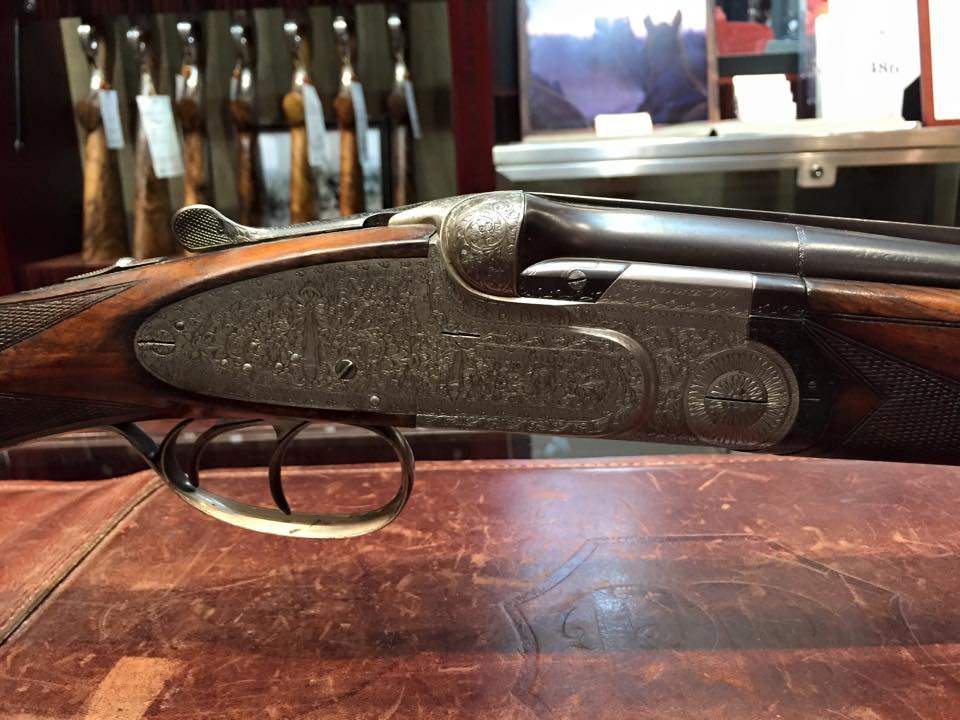
The barrels are hand machined and hand polished, and according to Beretta, this meant pellets had a higher velocity and penetration. Beretta used Italian walnut for the stocks that were hand polished and sheened to provide an exquisite appearance.
Hemingway had been invited to a Venetian duck hunt and found himself without a proper gun. To rectify this issue, he decided to purchase a Beretta SO3 for the hunt.
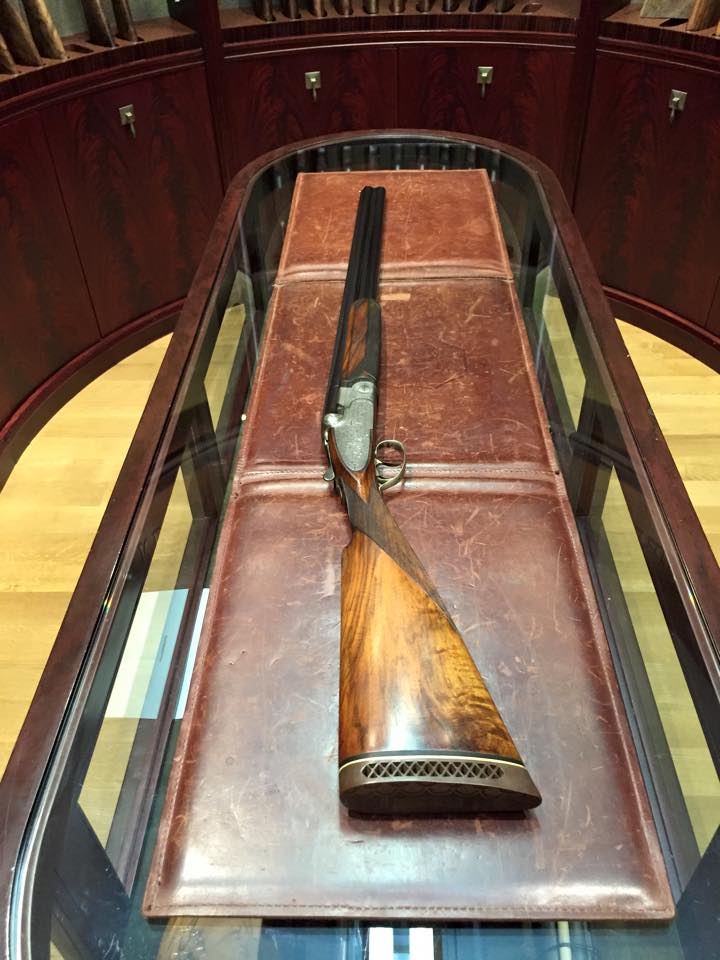
In December of 1949, he found this beautiful Beretta in Venice and kept it until his death. Mary Hemingway sold the weapon through Abercombie and Fitch, and it eventually found its way to the Beretta Gallery, where it resides today.
Thompson M1921
Coming off a classic shotgun and into a Thompson seems like quite the jump.
However, Hemingway was known for being bold, and is there any bolder gun than a Thompson Submachinegun?
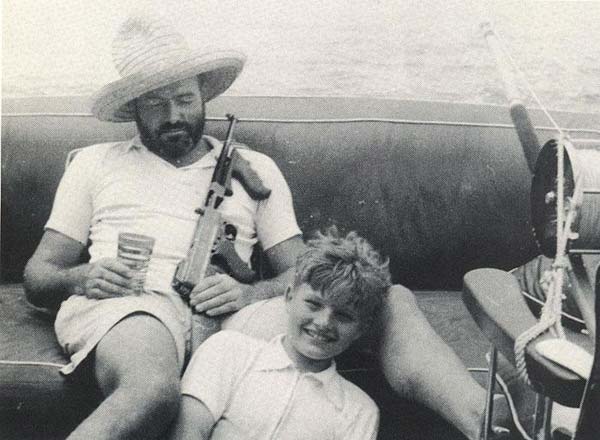
These early guns had beautiful blue finishes, gorgeous wood furniture, and the iconic front grip, sometimes known as the gangster grip. Earlier Thompsons also had a much higher rate of fire than later models — spitting up to 800 rounds of .45 ACP per minute.
Hemingway’s M1921 Thompson featured the older-style cooling fins and larger block rear sight but lacked the distinctive Cutt’s compensator.
Legend has it he won the gun in a gamble with millionaire William B. Leeds.

Hemingway was a hunter, and the Thomspon wasn’t a hunting weapon by any means, but that didn’t stop him from using it as one.
He reportedly carried the weapon on his boat when fishing off the coast of Cuba, where he used it to shoot sharks that were chasing their massive marlin. The Thompson is the subject of several pictures with Hemingway, and it’s seemingly always at sea or near the sea.
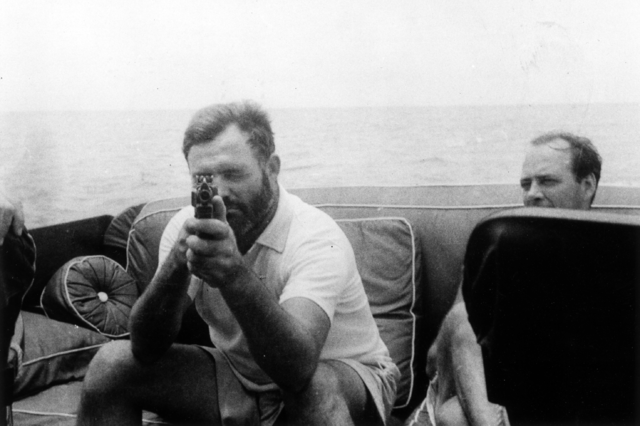
Sadly, his particular Thompson was lost to time, and its whereabouts are unknown.
The Westley Richards .577 Nitro Express
When you’re a big man hunting big game, you need a big gun.
For Hemingway, this came in the form of the Westley Richards .577 Nitro Express double-barreled rifle.
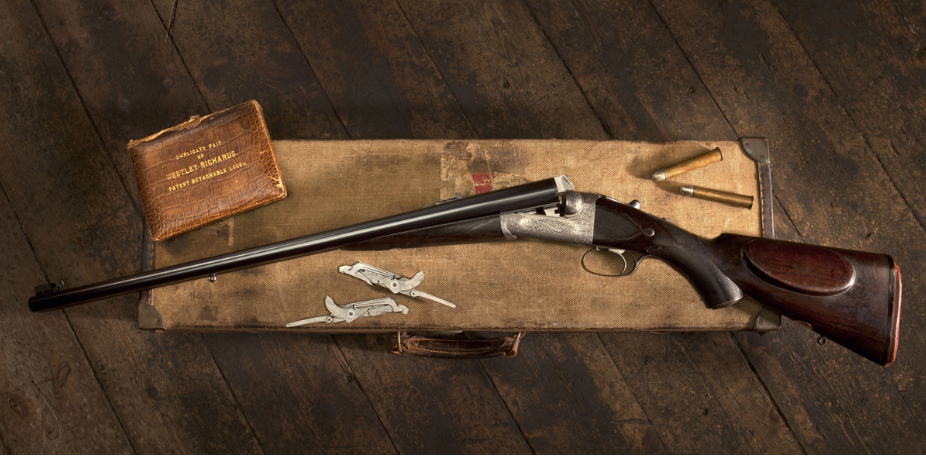
Westley Richard’s rifles were already famed by the hands of big game hunters, including men like Captain James Sutherland, who wrote the book The Adventures of an Elephant Hunter in 1912.
These double rifles offered shooters two barrels, allowing the shooter to fire two massive rounds in quick succession to take down dangerous game.
The .577 Nitro Express fires a 750-grain round at over 2,000 feet per second. They hit with 7,000 foot-pounds of energy and were designed specifically for large game such as elephants. The Brits even employed these guns against Germans in WW1 for punching through steel armor plates of the era.
Hemingway carried one on numerous hunts, including his famed U-Boat hunt off the coast of Cuba.
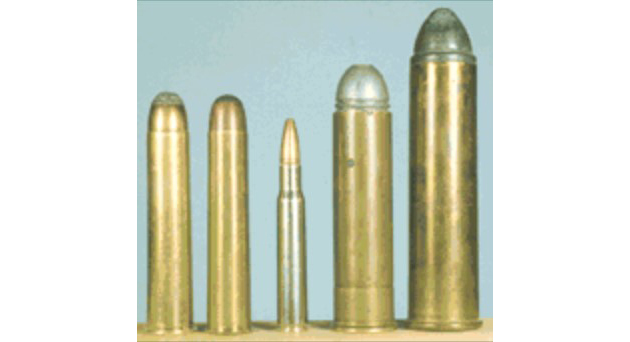
When stalking an animal weighing thousands of pounds, you can’t afford to have your weapon fail. The massive recoil of dangerous game rounds will bend, break, and crack any rifle that has even a hint of weakness.
As such, Westley Richards weapons were exquisite examples of craftsmanship. In addition to their strength, beautiful wood and gorgeous metal scrollwork adorn their guns. Each rifle is painstakingly crafted in small numbers, still to this day.
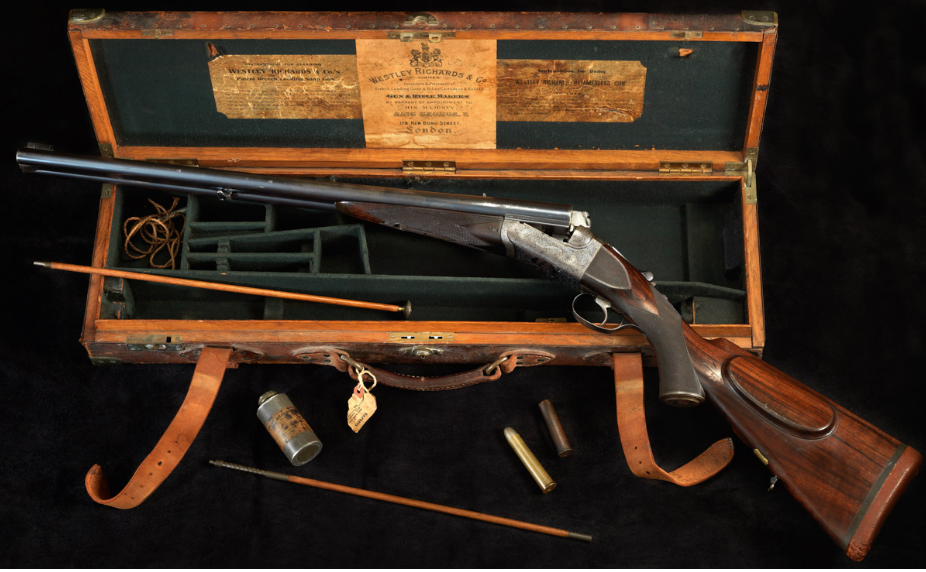
When you see one, It’s easy to see why Hemingway would choose the Westley Richards over all the other big-bore rifles of the era.
Winchester Model 12
It’s tough to say what Hemingway’s favorite gun would be, but If I had to, it would be his Winchester Model 12.
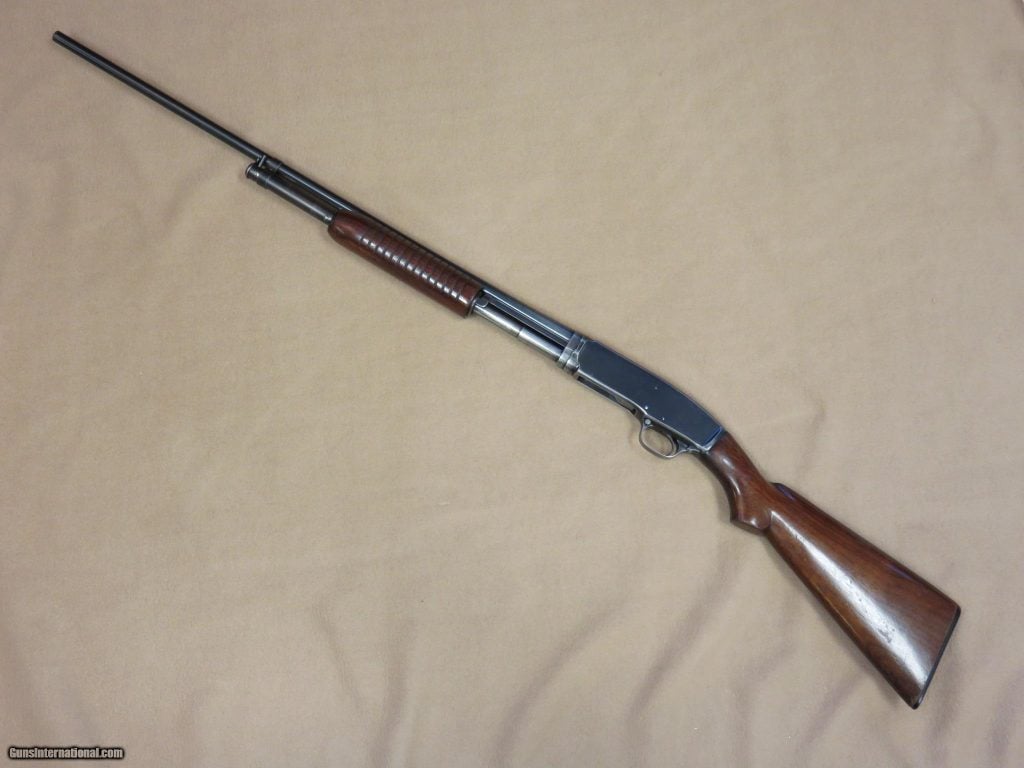
Reportedly he purchased the gun in his early teens and kept it until his death. His Model 12 was a constant companion throughout his life, and he supposedly owned multiple ones.
The Winchester Model 12 was built to be an improvement on the Model 1897. This gun featured an enclosed hammer and streamlined design. The gun became known for its quality, slick action, reliability, and ease of use.
Prices accurate at time of writing
Prices accurate at time of writing
-
25% off all OAKLEY products - OAKLEY25
Copied! Visit Merchant
Proclaimed as the Perfect Repeater at one point, the Model 12 set the standard for pump action shotguns. Even to this day, you can see the influence of the Model 12 on guns like the Remington 870 and Mossberg 500.
Hemingway’s favorite Model 12 featured a 30-inch barrel and a full choke.
He took it with him everywhere, from Cuba to Africa. He once chased an injured leopard into the bush, and with him, he took the Winchester Model 12.
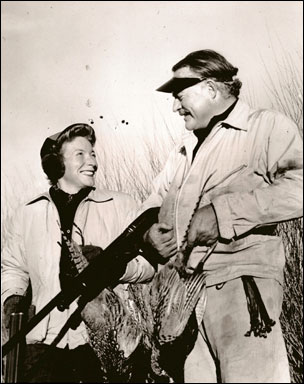
He described the gun once as “…old, well-loved, once burnt up, three times restocked, worn smooth old Winchester Model 12 pump gun…” He said of it, “…thirty-five years of us being together, almost as close a friend and companion with secrets shared and triumphs and disasters not revealed as the other friend a man has all his life…”
According to the book Hemingway’s Guns, the well-loved Model 12 was sold for $35 to a college student, but after that ownership of it, the weapon disappeared into history.
Winchester Model 61
As a fan of Winchester pump action shotguns, it seemed only natural to take a fondness for Winchester pump action rifles — which Hemingway certainly did.
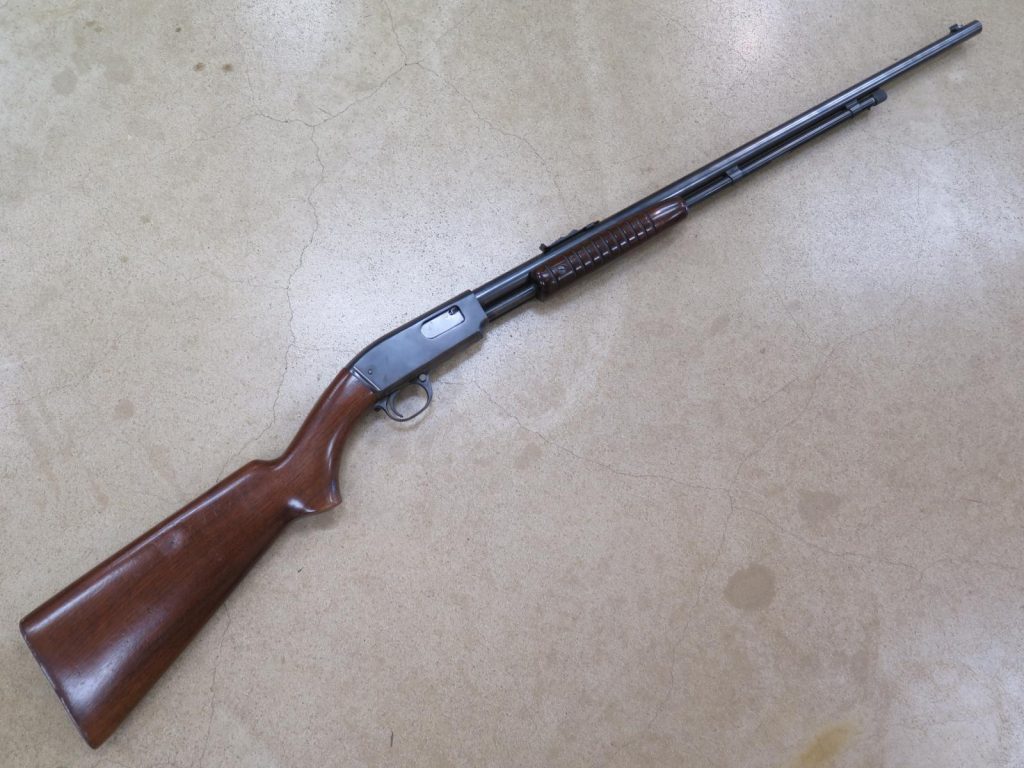
He reportedly owned several of them, with the Model 61 being one of his favorites.
Winchester had seen great success with the Model 1897 and Model 12 and was rapidly becoming the dominant force in the world of pump action shotguns, but they also produced pump action rifles.
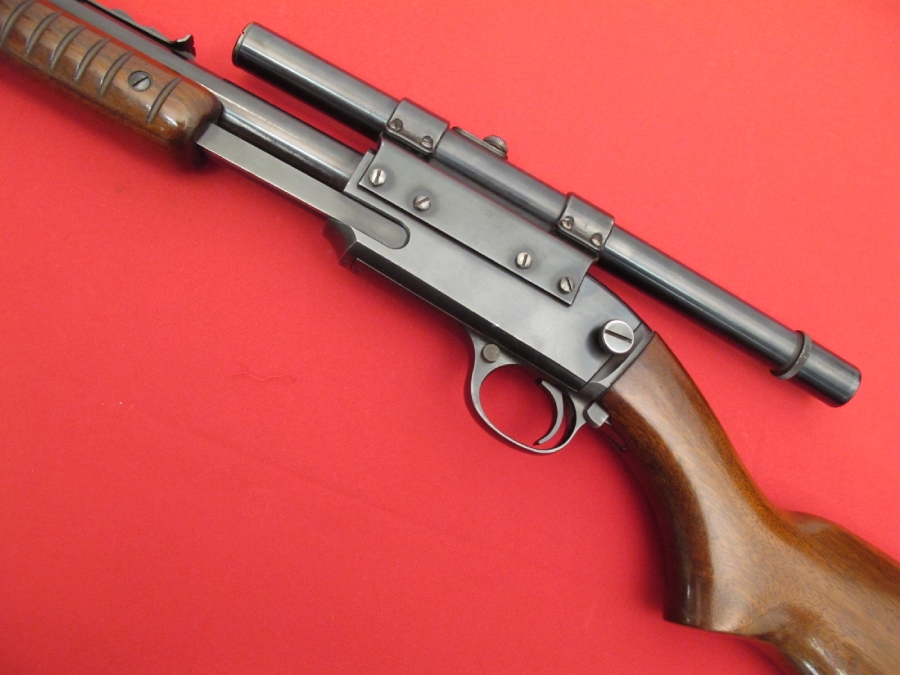
Prior to the Model 1897, Winchester produced a Browning-designed pump-action rimfire gun, the Model 1890. They decided to upgrade the rifle, ditching the hammer in the process, and the Model 61 was born in 1932.
This weapon featured a smooth pump action, a tubular magazine, a round barrel, and wooden furniture. These rifles could fire all manner of rimfire .22 caliber rounds, including shorts, longs, and long rifle.
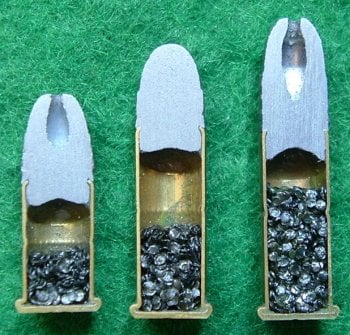
According to Hemingway’s wife, Mary, he would shoot small animals with these guns and even birds who reportedly knew how to stay out of shotgun range. What became of his Model 61s remains unknown.
Colt Woodsman
Hemingway wasn’t a huge fan of semi-auto weapons, but he had a soft spot for the Colt Woodsman.
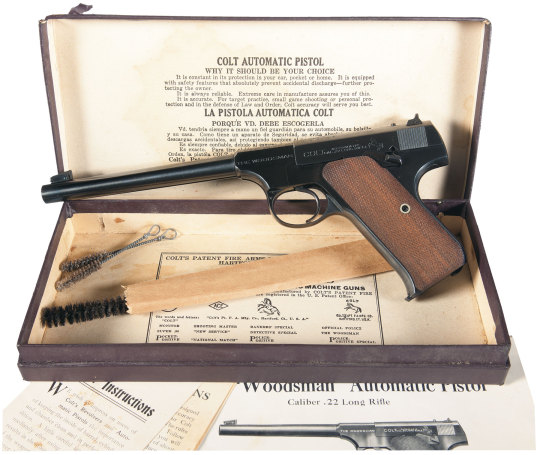
He would even often say the Woodsman would be an excellent concealed carry pistol and said he could drop any pro boxer before they got close enough to hit him.
The Woodsman was a simple blowback-operated, magazine-fed pistol with a fixed barrel. Despite this, it was fairly revolutionary in that it offered a semi-auto .22 LR firearm at a time when they weren’t common.
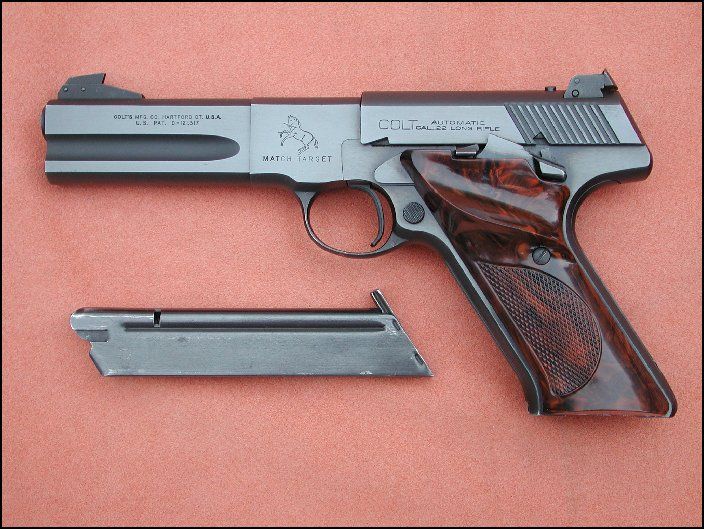
Hemingway owned several Woodsman pistols, and they were one of the few handguns of note in his collection. He owned several models, including standard and target versions, including one with a handcrafted leather holster.
These little guns are a ton of fun to shoot and are known for their accuracy and reliability — even from a time when semi-autos were not a popular option.
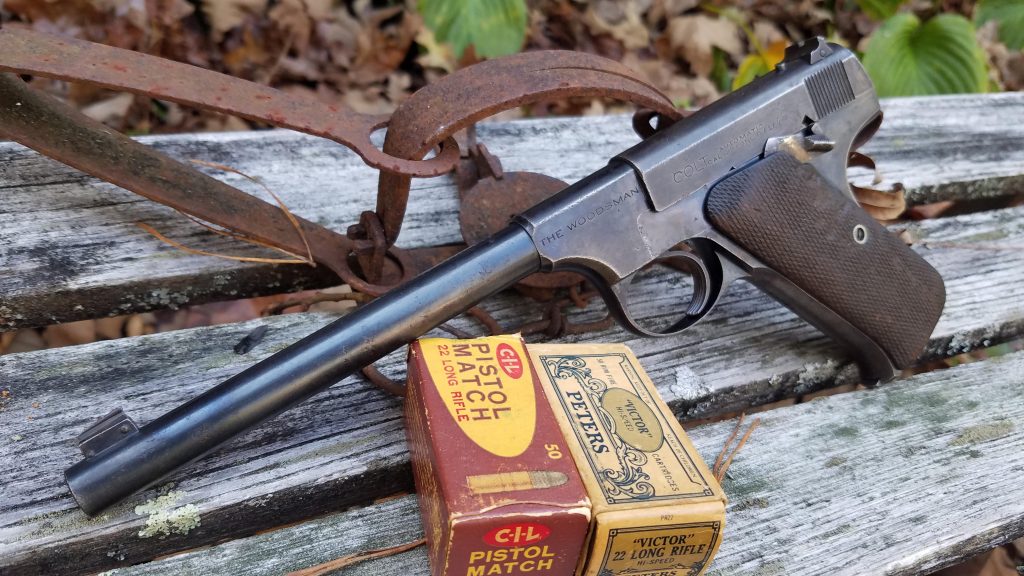
These handy little guns remained in production from 1915 all the way up to 1977. The long history of production introduced three different series or generations of firearms. They remain popular with collectors today.
Several of Hemingway’s Woodsman pistols went to auction and sold for thousands of dollars.
Springfield 1903
Another of Hemingway’s favorite rifles was the Springfield 1903. While originally military rifles, in the 1930s, surplus rifles became common on the commercial market.
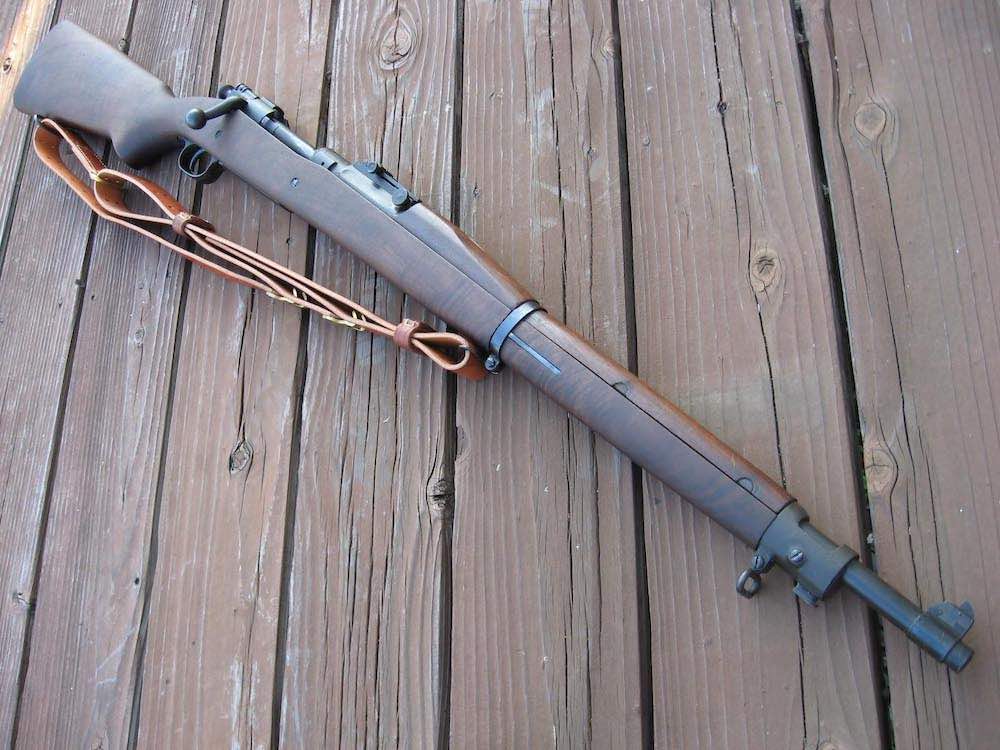
When we talk about functional firearms, it’s tough to beat a bolt action rifle in the all-American .30-06 cartridge.
As a military rifle, it was rugged, reliable, and dependable. However, they are somewhat heavy, rough around the edges, and not quite what most hunters want in a bolt-action rifle.
Ernest Hemingway sent his Springfield 1903 to Griffin and Howe. This custom firearm’s house took the 1903 and sporterized it to make it more akin to a hunting rifle without stripping it of its military dependability.
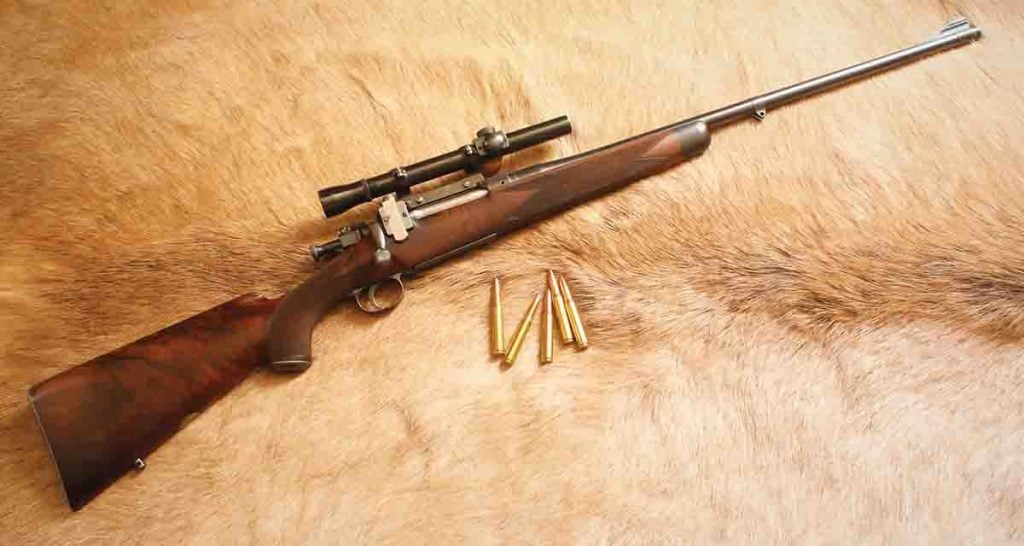
Hemingway received the weapon back in June of 1930, and from then on, it was used across the world, including hunting in both Wyoming and Africa.
Interestingly, Hemingway’s rifle had an optic mounted by Griffin and Howe, but several pictures show the mount empty. Perhaps he was a fan of iron sights, or maybe the optics of the day weren’t tough enough to keep up with his extreme lifestyle.
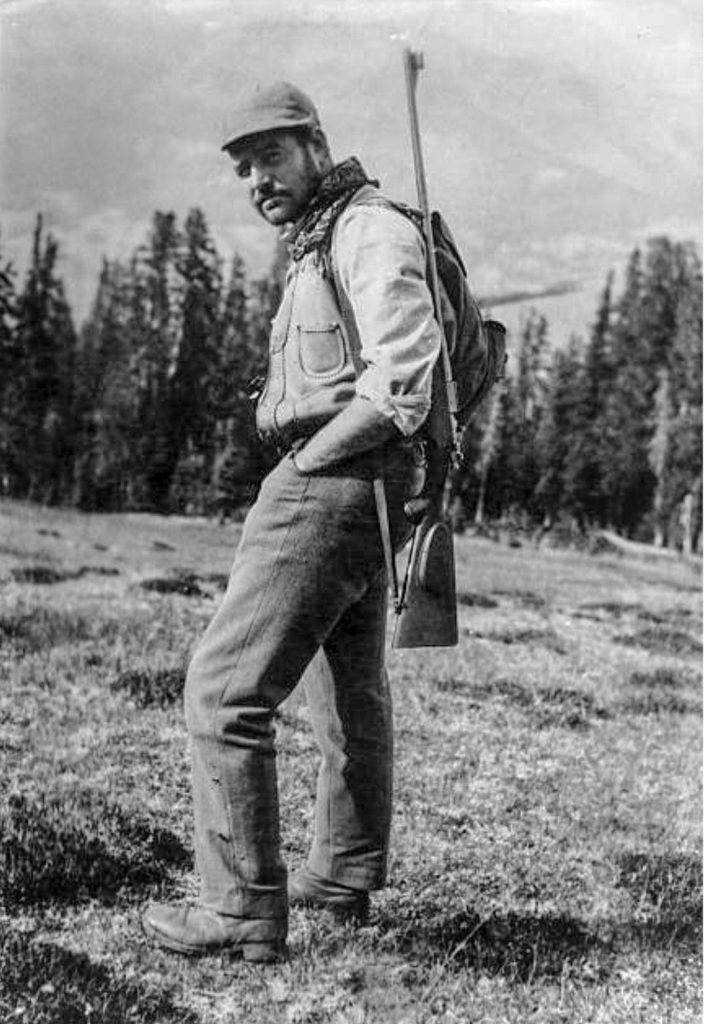
Hemingway’s gun had Griffin and Howe’s shape stock with a pancake cheekpiece, a hooded and banded ramp front sight, and an unoccupied Griffin side mount base for an optic.
Griffin and Howe are still around and still making finely-tuned firearms, which means you might be able to get your own Springfield sporterized in Hemingway’s configuration.
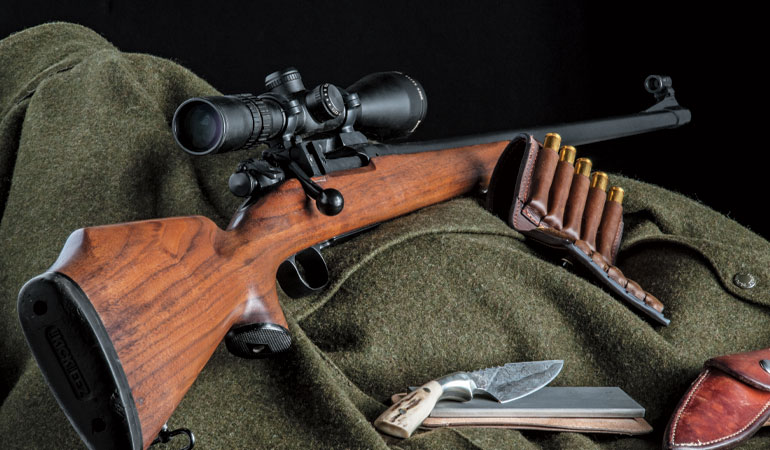
Final Thoughts
For such a notable figure, it’s fascinating how many of his guns disappeared after his death.
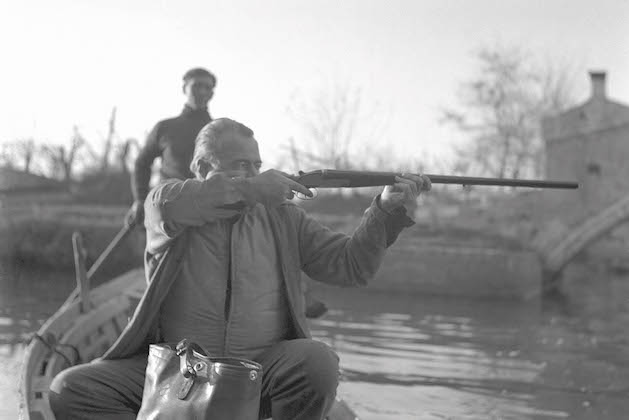
His wife sold many through Abercrombie and Fitch on consignment. These guns were sold with little fanfare, and unfortunately, many of his firearms are unaccounted for.
While some are in the hands of private collectors, some remain lost. Which would you hope to find in grandad’s gun safe? Let us know in the comments below! Interested in other historical figures’ guns? Check out our article on Eleanor Roosevelt’s Pistols!

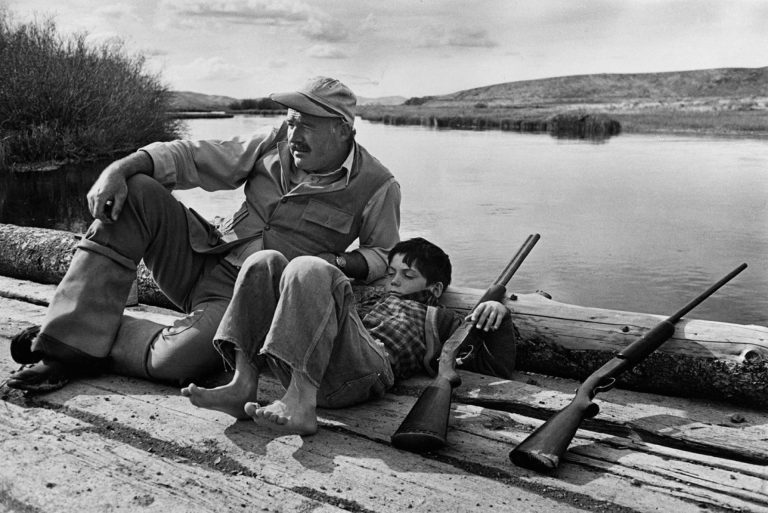
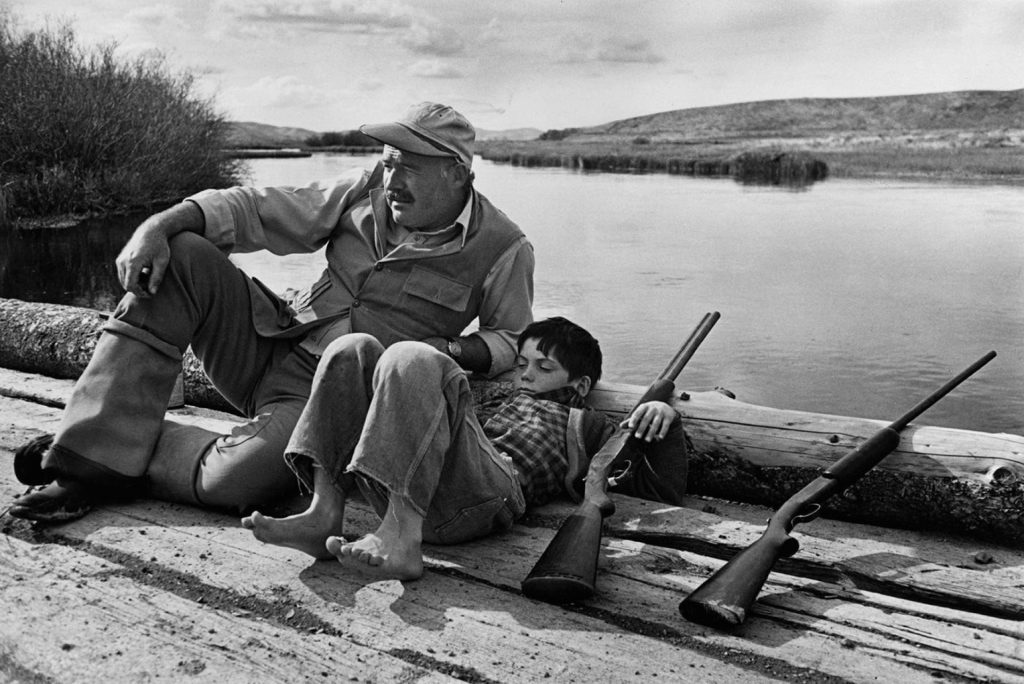








1 Leave a Reply
The side by side in the second pic is a W. & C. Scott & Son. He carried it all over the world with him. Also believed to be the last gun he ever fired. His family had a local welding shop destroy it shortly after that shot.